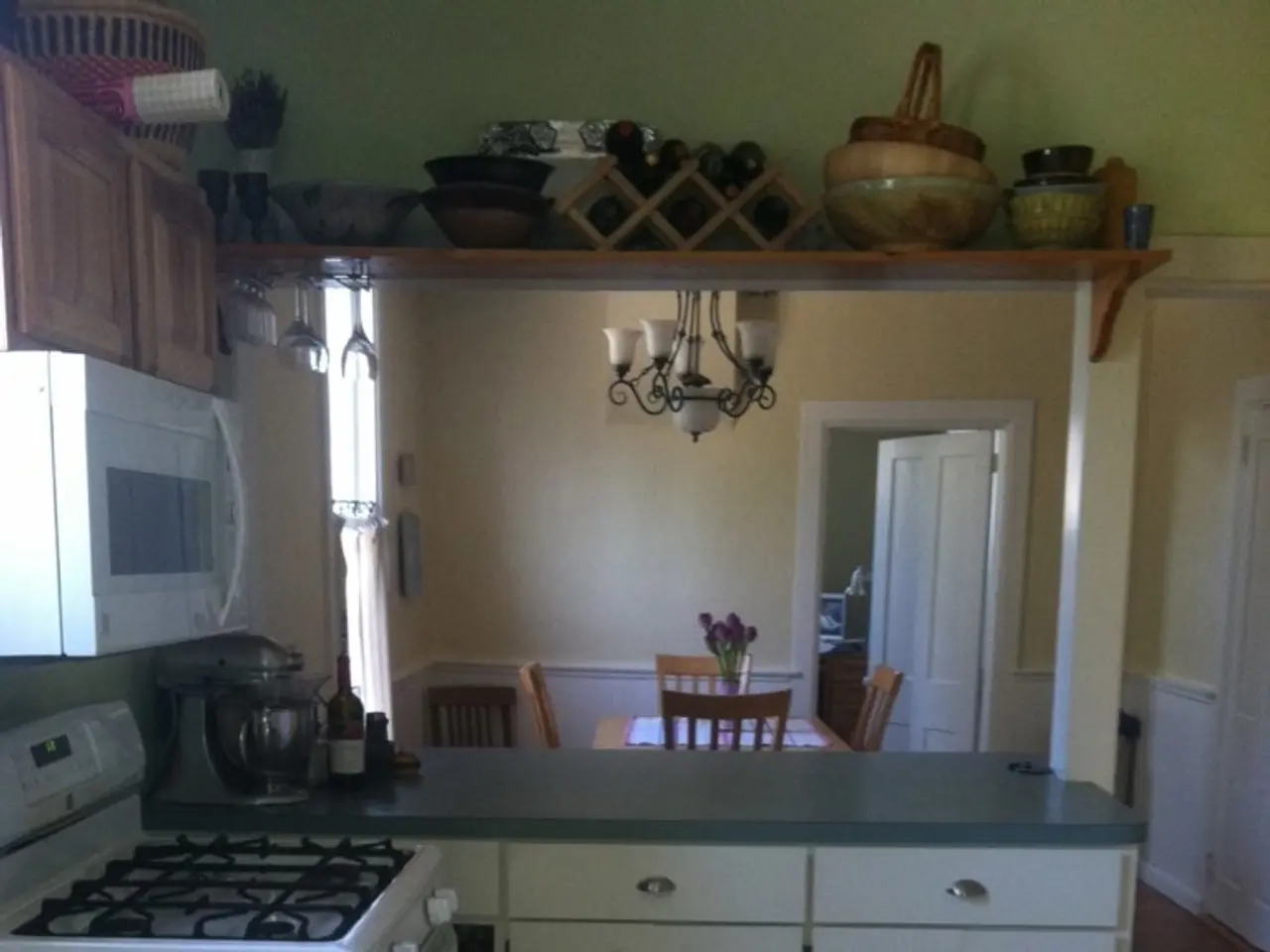Differences between kitchen islands and tables: That minor distinction with significant consequences
Revival of Cook's Tables: Modern Kitchen Islands Inspired by History
Cook's tables, once simple and sturdy work surfaces in traditional kitchens, have evolved into the modern kitchen islands we see today. These multifunctional furniture pieces serve as workspaces, storage, and social hubs, reflecting changing kitchen designs and lifestyle needs.
Originating as utilitarian tables central to culinary activity, cook's tables have undergone a transformation over time. In recent years, they have experienced a revival, particularly in Victorian and Edwardian interiors, where they are cherished for their historical charm.
Contemporary British makers and designers have contributed to this evolution, creating handcrafted kitchen islands inspired by the concept of traditional cook's tables. Companies like Smallbone of Devizes, Artichoke, Neptune, Plain English, Humphrey Munson, Emma Sims-Hilditch, and Ben Pentreath Studio have all played a part in this revival.
Smallbone of Devizes, founded in the 1970s by Charlie Smallbone, Graham Clark, and Mark Wilkinson, champions fine craftsmanship and classic forms, often producing custom kitchen islands derived from traditional forms but updated for convenience and style.
Artichoke, on the other hand, specializes in handcrafted kitchens rooted in English period styles, often blending traditional cook’s table inspiration with rich materials and artisan joinery.
Neptune offers kitchen furniture that combines solid wood craftsmanship with contemporary design, echoing the cook’s table heritage but tailored for today's kitchen needs.
Plain English focuses on lovingly made kitchens that reinterpret traditional English joinery, including kitchen islands born from the cook's table’s roots but adapted for modern aesthetics and practicalities.
Humphrey Munson delivers bespoke kitchen furniture that is both functional and elegantly crafted, drawing on traditions of cabinetry and table-making, melding old and new.
Emma Sims-Hilditch and Ben Pentreath Studio create kitchens reflecting historical English interiors, wherein kitchen islands or tables draw directly from the concept of cook’s tables but updated with contemporary materials and layouts.
In response to the need for practical solutions in limited space kitchens, a hybrid design has emerged. This design combines the functionality of a kitchen island with the elegance of a freestanding table, offering a versatile solution for modern kitchens.
The kitchen island has become a focal point in the design and use of kitchens, often handcrafted by these studios to reflect a lineage from simple cook's tables through to versatile, stylish kitchen centers. They are used not only for food preparation but also for serving breakfast, completing homework, making drinks, and gathering friends.
Rupert Cunningham of Ben Pentreath Studio, for instance, designed a Regency-era kitchen with a standalone cook's table, while Emma Sims-Hilditch created a modern interpretation of a cook's table as part of a modern boot room.
This year's WOW!house at the Design Centre, Chelsea Harbour, London, showcases the cook's table's return as a popular design choice, demonstrating its versatility and enduring appeal.
In large country houses, kitchens were traditionally used for food preparation and were organized with separate larders, sculleries, pantries, and still rooms. However, in modern homes, the kitchen island has taken on a new role, becoming the heart of the home, a sociable living space instead of a place of drudgery.
As we can see, the evolution of cook's tables into kitchen islands is a testament to the adaptability of design, blending heritage, craftsmanship, and modern functionality. These furniture pieces continue to evolve, reflecting changing kitchen designs and lifestyle needs, making them a timeless addition to any modern kitchen.
- Incorporating elements from traditional cook's tables, British makers and designers have revitalized the home-and-garden scene by creating contemporary kitchen islands.
- By embracing the lifestyle needs of today, interior-design trends have witnessed a resurgence of the traditional cook's table, redefined as a versatile, multifunctional piece for modern kitchens.




